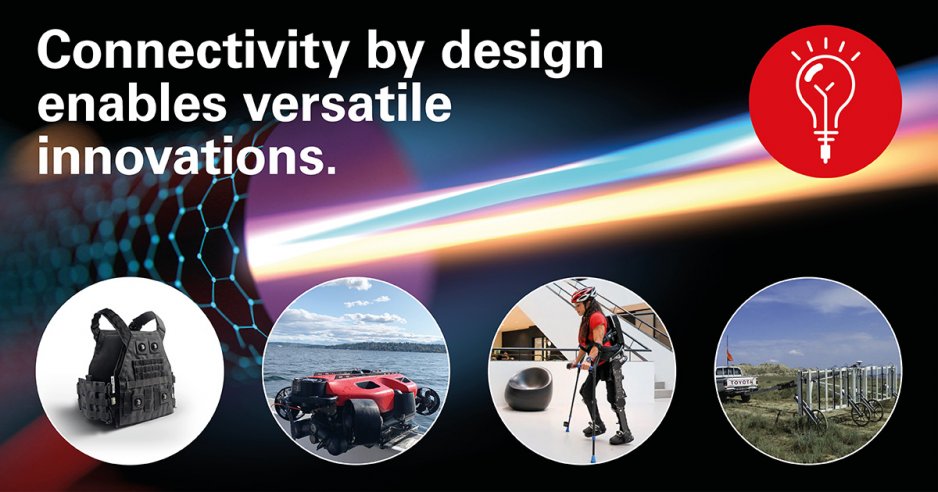In ConnectorSupplier’s ‘2020 Interconnect Innovations eBook’, Fischer Connectors’ Head of Product Design Hassan Fadli shares in-depth engineering insights on the connectivity-by-design approach. Connectivity by design enables innovation by removing integration and cable management roadblocks for OEM design engineers and enhancing usability for end users. Four application success stories showcase the efficacy of the connectivity-by-design approach and provide a glimpse into the future of connected defense, security, industrial, marine, medical, and geologic applications.
Connectivity by design enables versatile innovations
December 10, 2020 · 2 min readCutting-edge applications, devices, and smart ecosystems including unmanned systems, robotics, wearables, embedded electronics, and IoT and Internet of Humans (IoH) networks have unique demands that are best met through a connectivity-by-design approach. In practice, connectivity by design means identifying connectivity requirements, constraints, and opportunities upstream in the application design process and then striving to integrate reliable, high-performance, easy-to-use connectivity solutions capable of simultaneously satisfying various technical requirements — such as supplying high power and transferring massive amounts of data in even harsh and extreme operating environments — as smoothly and efficiently as possible.
In any innovation-driven team configuration, the connectivity solutions provider serves as an enabler equipped with both a technology platform and an incubator that are versatile enough to engineer and design not only physical connectivity components (e.g., connectors and cable assemblies) but connectivity solutions that go beyond traditional connector designs, such as holistic wearable ecosystems for connected humans and active solutions for next-generation electronics applications.
Overcoming Integration Roadblocks with Wearables
When it comes to designing compact, easy-to-use devices like portables and wearables, it’s critical to overcome major roadblocks like complicated integration. New plug-and-play technologies allow plugs to be directly integrated into the housings of wearable devices including radios, bodycams, LEDs, and biometric sensors. This allows users to quickly and easily mate the wearable with a panel-mounted receptacle or a receptacle sewn directly into the fabric of a wired network. These networks, which can take the form of a smart tactical vest or an industrial personal protective equipment vest, serve as a hub for a modular array of communications systems and active devices interconnected through a central bus switch and powered by a single central battery.
These networks also optimize cable management by avoiding long, easily twisted and tangled breakout cables on the outside of the equipment or leveraging direct integration technology, doing away with cables entirely, and creating cable-free ecosystems that embed wiring, communications, and power systems inside, which also provides space and weight savings.
>> Read the full article by Hassan Fadli in Connector Supplier’s ‘2020 Interconnect Innovations eBook’ (pp. 20-25) > “Connectivity by Design Enables Innovation” with 4 application cases showcasing the efficacy of the connectivity-by-design approach:
- Wearin’s Connected Vest – A Centralized, Integrated Connectivity System
- SRS’ FUSION UUV – Extreme Sealing for Massive Fiber Optic Data Transfer
- TWIICE Exoskeleton – Lightweight, User-Friendly Connectivity
- SENSYS Magnetometer – Durable, Portable, Non-Magnetic, Plug-and-Play Connectivity
This may be of interest to you
Waterproof and hermetic connectors for test and measurement applications
December 3, 2020 · 4 min read
